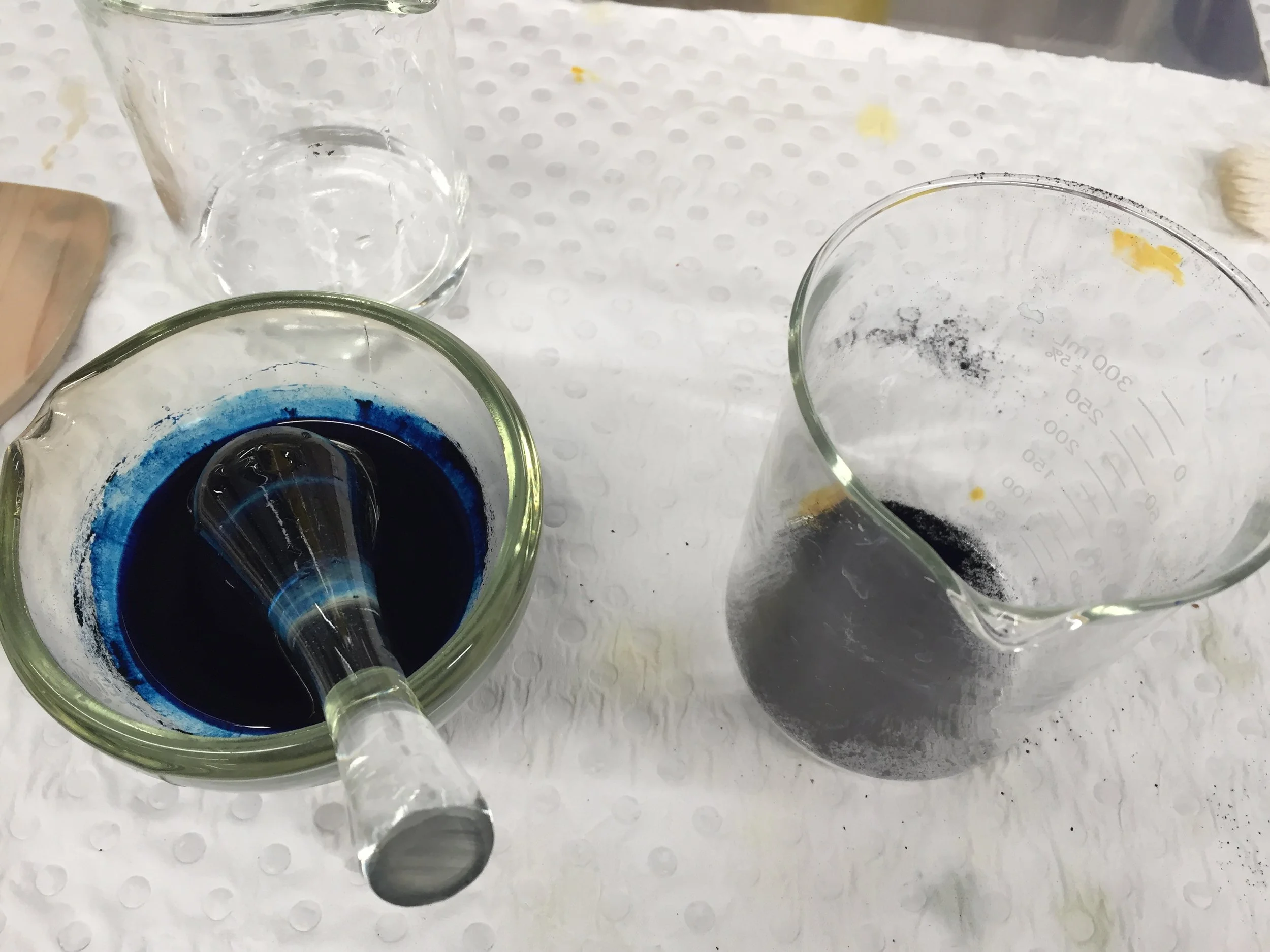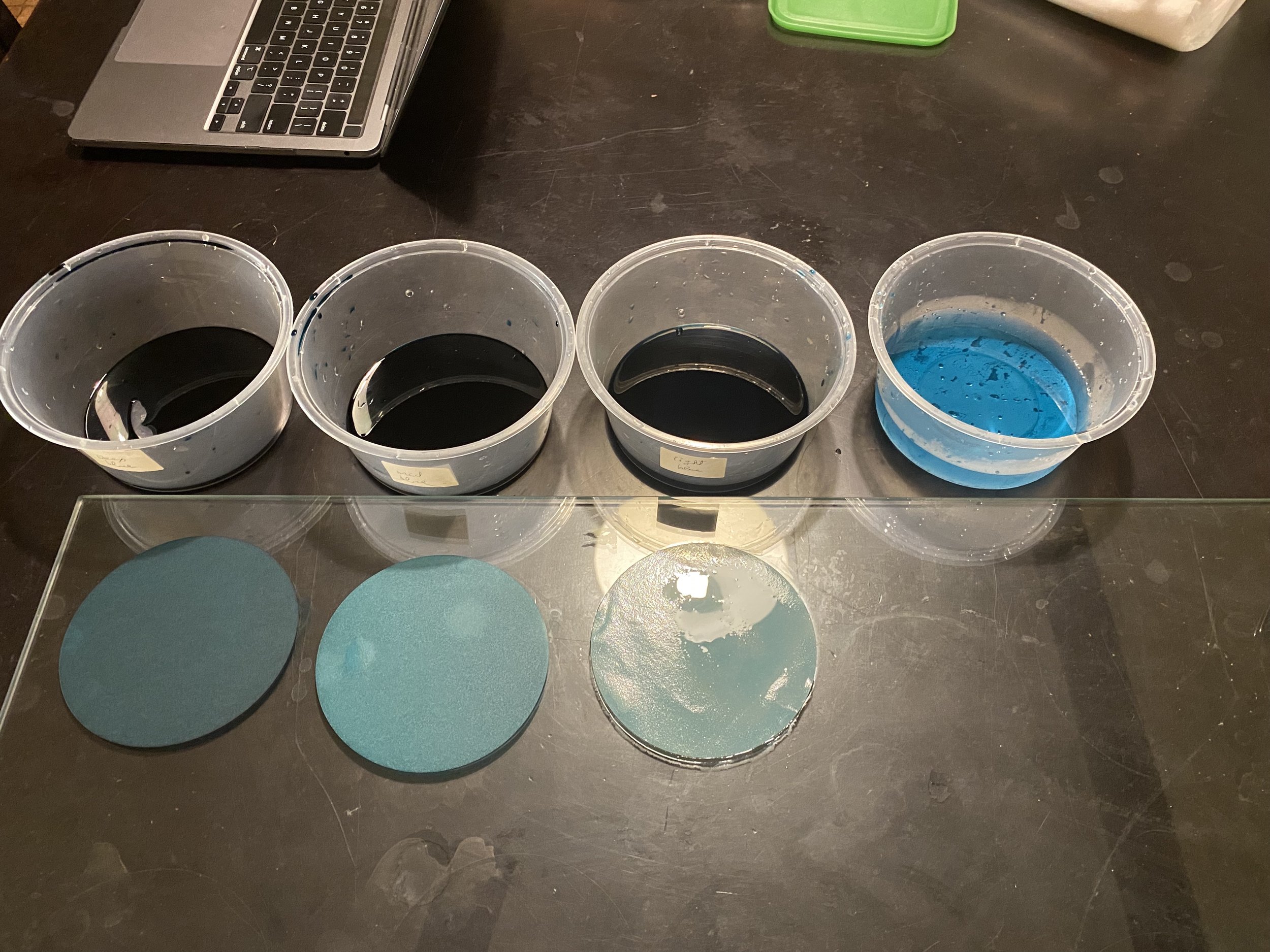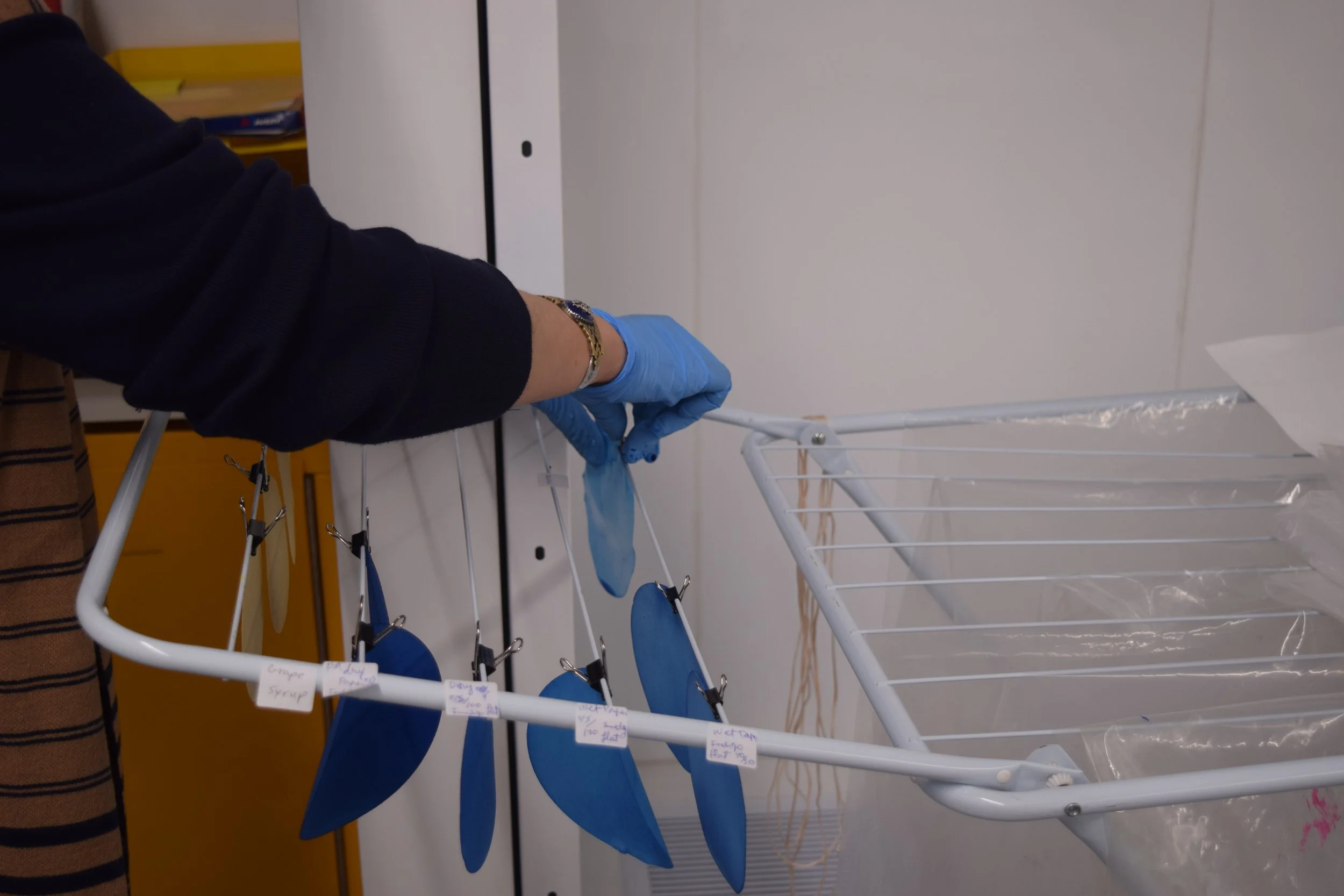INDIGO (NIL) DYE RECIPES
There are small number of Persian historical recipes that explain the process of extracting the indigo dye from the plant and the dyeing process.
Two sources Resāleh-ye Ḵošnevīsī (1120 A.H./1708 A.D.) in 18th century, and Resāleh Dar Bayān-e Rang Kardan-e Kāğaḏ in 19th century describe how to make a blue paper by using indigo (nil). It seems the recipes describe the first technique advising to soak the indigo plant leaves in water and allowed them to ferment for a day in the vat. After the material is soaked in the dye-bath, it is dried in the air to oxidize the reduced indigo. Oxidization in the air fixes the indigotin and gives it its blue colour.
The recipe of Resāleh-ye Ḵošnevīsī (1120 A.H./1708 A.D.), and Resāleh Dar Bayān-e Rang Kardan-e Kāğaḏ (19th century) reads as follows:
اول باید که پیش از رنگ کردن به یک روز خم نیلْ گیری به خاتم مختوم سازد و نگذارد که دست بر او کنند. و بعد از آن کاغذ را در میان آب کشیده بالای تخته بر روی یکدیگر بیندازد که آبهای کاغذ بچکد و اندک سفت شود، اما نگذارد که خشک شود که در وقت رنگ کردن داغ دار خواهد بر آمد. و اگر احیاناً خم نیل گری دور تَرَک باشد پارچه به آب تر کرده بر روی تختهٔ کاغذ بیندازد که خشک نشود
صورت رنگ کردن: کاغذ را در خم نیل استاده بیندازد، به طول کاغذ را در خم فرو برد نه به عرض، و از آنجا بدر آورده در آب صاف بکند و خشک نماید
Before dyeing paper, the indigo vat is prepared in advance by taking an indigo container (ḵom-e nīl garī) and placing indigo solution inside, then sealing it. It should not be touched for one day. Paper sheets are dipped into the water and drained on a board until the papers become slightly hard. Do not let the moist papers dry completely because stains may appear on the paper if it is dyed in a dry condition. In case the indigo vat is far from the workplace, it may dry during the dyeing process. In this case, apply a damp cloth on top of the sheets of paper to prevent the paper from drying. To dye paper, insert it vertically into the indigo vat lengthwise and not widthwise (not laid out flat). Take the paper out of the dye and dip it in clear water to wash. Finally, let it dry.
Experiment:
First, prepare a concentrated indigo dye. For various shades of blue, ranging from dark to light, add water to the concentrated indigo dye in separate glass containers and let it sit for a while. Dip paper sheets into the water and drain them on a board until the papers become damp. Avoid letting the moist papers dry completely, as stains may appear if the paper is dyed in a dry condition. To dye the paper, insert it vertically into the indigo dye solution lengthwise. Take the paper out of the dye and dip it in water. Finally, let it dry.



